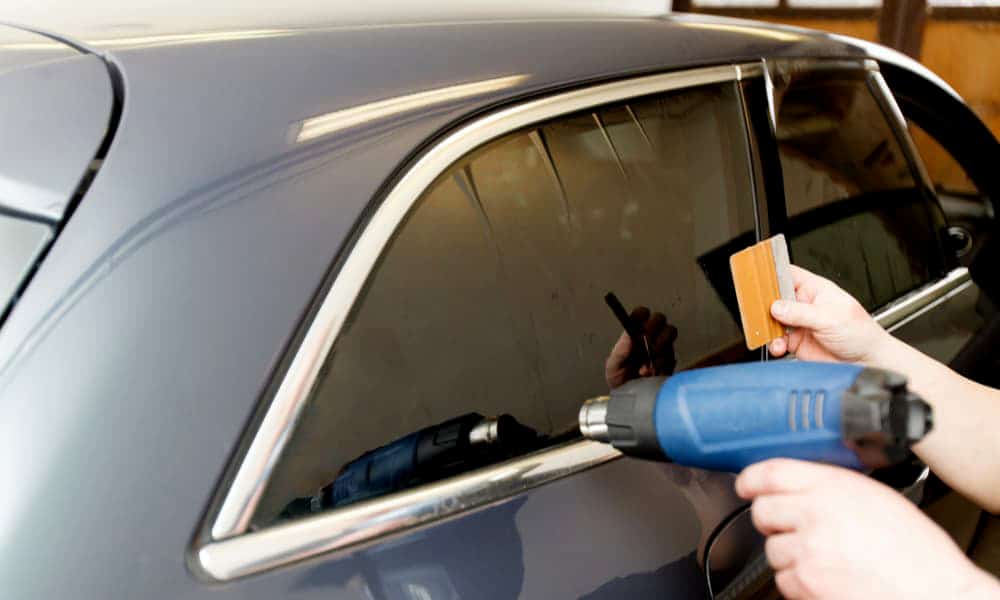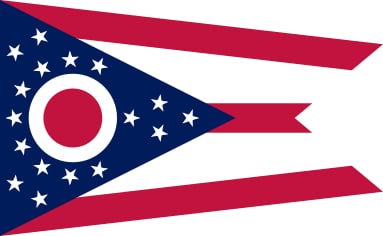Getting your car’s windows tinted is always a good idea. Tinted windows offer additional safety and privacy and lend the vehicle a sharp look.
However, if you live in Ohio and intend on going ahead with this upgrade, you’re going to want to know what the tint laws are in your state.
There are reasons why there are rules around how dark your car’s windows can be. On one hand, tinted windows block UV rays, keep your cabin cool, and they make your glass harder to shatter.
But on the other hand, they offer a ton of privacy which is often misused to conceal illegal activity. And when the tint is overly dark, it hampers vision which makes for an unsafe situation.
There are varying tint laws across the country. Each state relies on its own set of laws. Let’s find out what tint laws are followed in Ohio.
Is Window Tint Legal In Ohio?

Ohio tint laws were put into action in 2004. These laws determine the legal limit in regard to the type of tint that can be used on the windows of various vehicles.
Tinting laws are enforced for the safety of the driver, passengers, and other vehicles on the street. Law enforcement officers need to be able to identify the passengers of any vehicle when they approach them.
Though window tint is legal in the state, there are certain rules and regulations that must be followed to maintain its legality. If someone does not stick to the tint laws, they will face a misdemeanor and a fine.
Permitted Window Tint Darkness

Window tint darkness can be measured with the help of a unit called VLT which is short for visible light transmission.
VLT or visible light transmission varies across different states. It refers to the amount of light your tinted windows can let through into your car cabin.
It is specified in percentages. If a VLT% is high, it means the tint is clearer. For instance, 70% VLT means that the tint allows 70% of light to transmit through the film and the glass.
In the case of a lower VLT%, the tint is more opaque. For example, a 10% VLT tint is much darker than a 70% VLT tint. Only 10% of light is allowed to get through the tint of this VLT percentage.
Sedans
Windshield: You can use a non-reflective tint with 70% light transmittance in the upper five inches or over the AS-1 line of the windshield.
Driver-side windows: Tints with over 50% light transmittance are allowed.
Passenger-side windows: You can apply any level of tint darkness.
Rear window: You can apply any level of tint darkness.
SUVs and Vans

Windshield: Non-reflective can be applied over the As-1 line or in the upper five inches.
Driver-side windows: Tint must allow more than 50% light transmittance.
Passenger-side windows: There are no restrictions to the level of tint darkness you can use.
Rear window: Any tint darkness level may be used.
Acceptable Tint Reflection
The amount of light reflected by your tint is also a concern. The more light it reflects, the more it resembles a 2-way mirror.
If a tint has a higher percentage of reflective material, it will deflect more light. Tint reflection aids in glare and heat reduction.
It is not the same as tint darkness. While tint darkness restricts the entry of light into the car due to its level of opacity, tint reflection works by reflecting light off the film.
However, the use of reflective tints is prohibited in Ohio.
Other Ohio Tint Rules You Need to Know

Below are some other tint rules you must follow in the state of Ohio.
- Side mirrors: If the windshield mirror view is obstructed, for instance, due to a rear window tint, then the vehicle is required to have dual side mirrors.
- Colored tint: There are no restrictions on the use of colored tints in Ohio.
- Window tint certification: Manufacturers in the state that sell tint films must certify the film.
- Certification sticker: Vehicles with tinted windows must have certified stickers on them to identify the type of tint and show the legality of the same.
- Medical exemptions: The state’s tint laws do not make medical exemptions for window tints. No one is allowed to use special tints.
- Fine for violations: If caught with an illegal tint, the driver of the vehicle will get a moving violation and a fine of up to $120.
State of Ohio Info

This Midwestern state is the 34th largest state in the country in terms of area.
It hosts the 7th largest population in the United States. It is nicknamed the Buckeye State.
Population: 11,544,225
Capital: Columbus
Registered vehicles: 9,800,933
Total lane miles: 262,492
Number of highways: 21
Tint law references: Ohio Administrative Code

